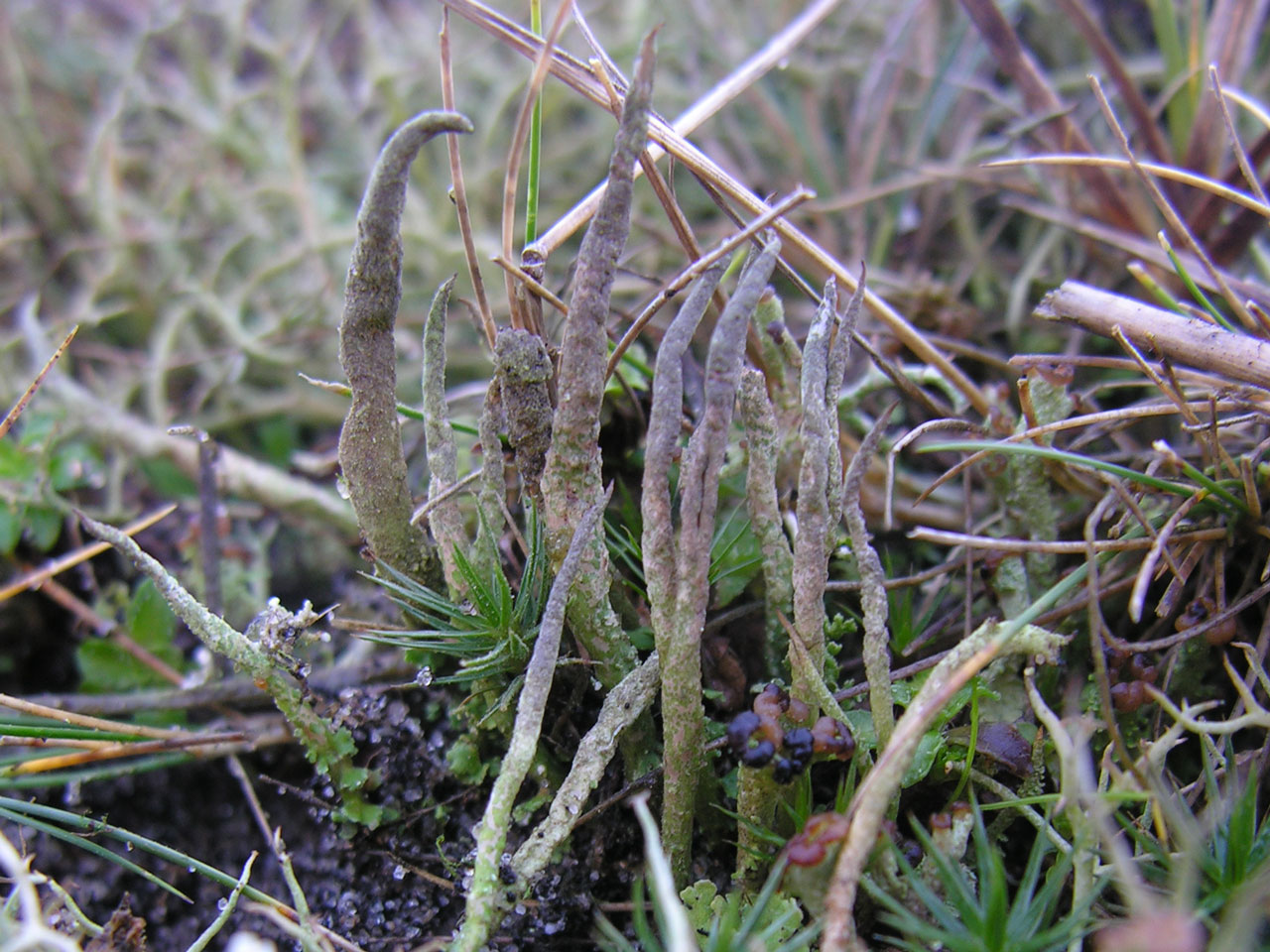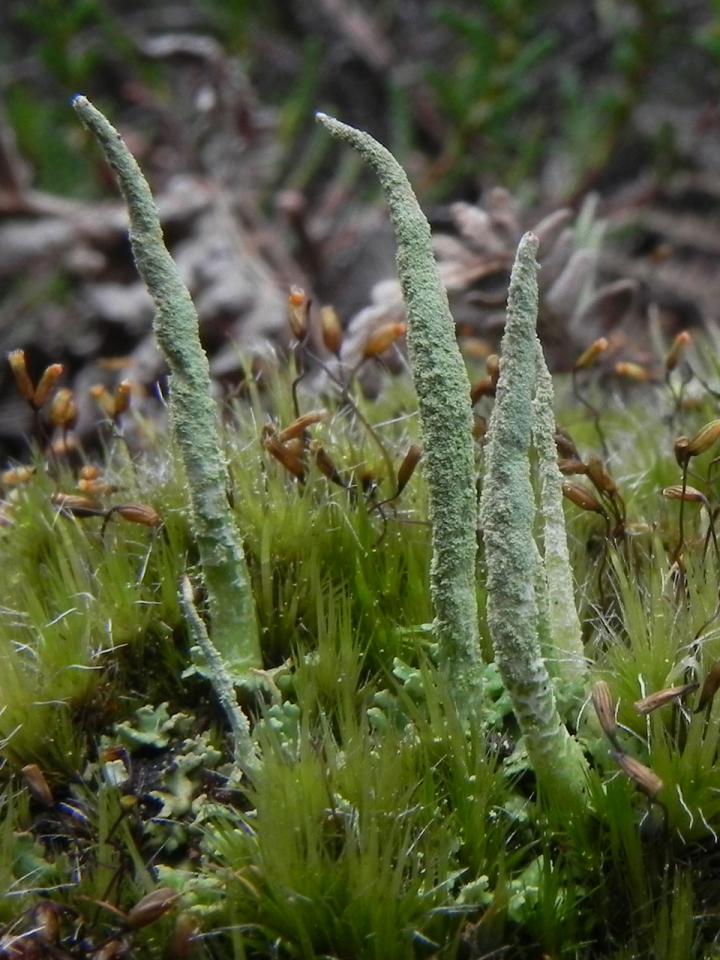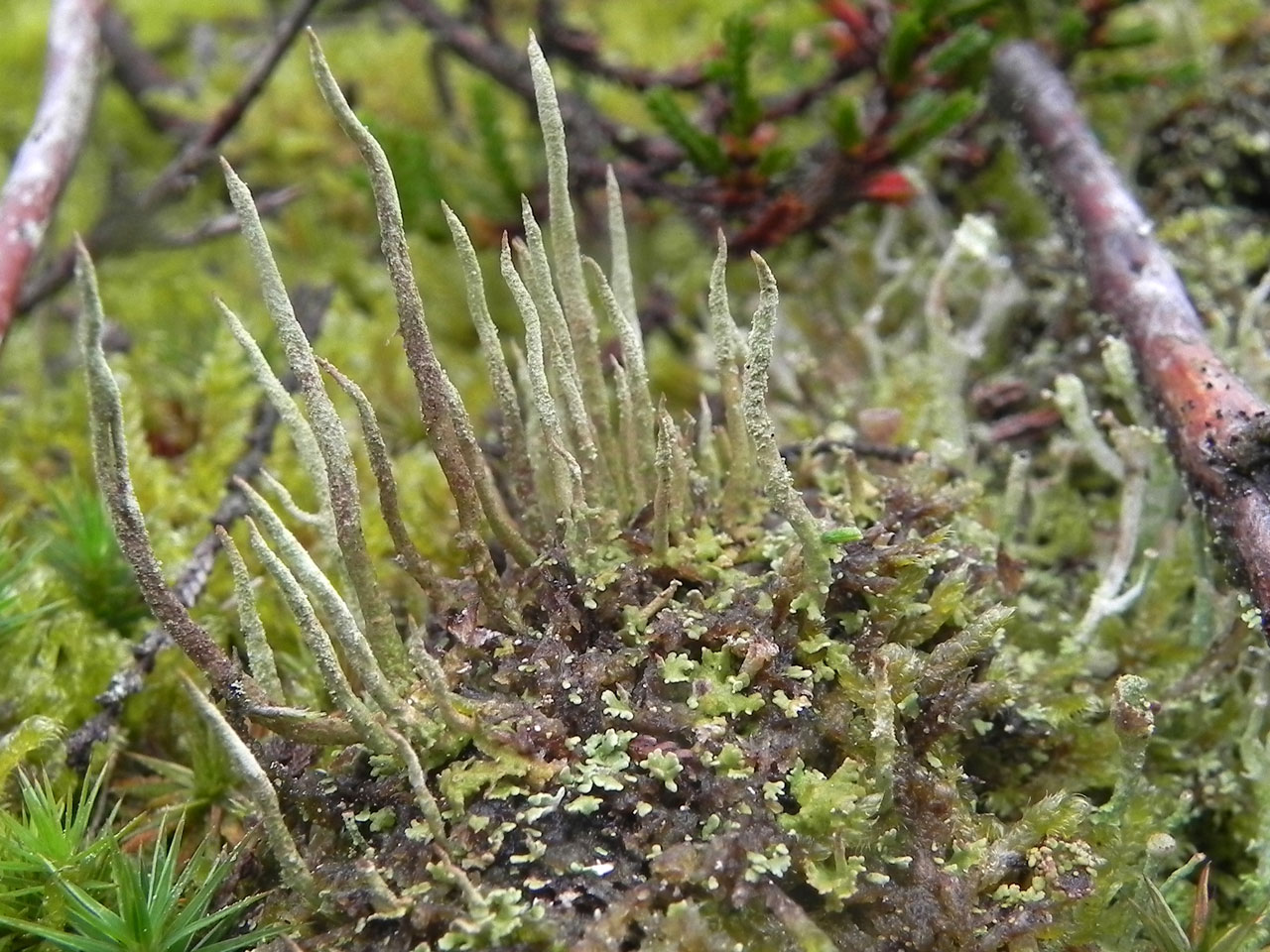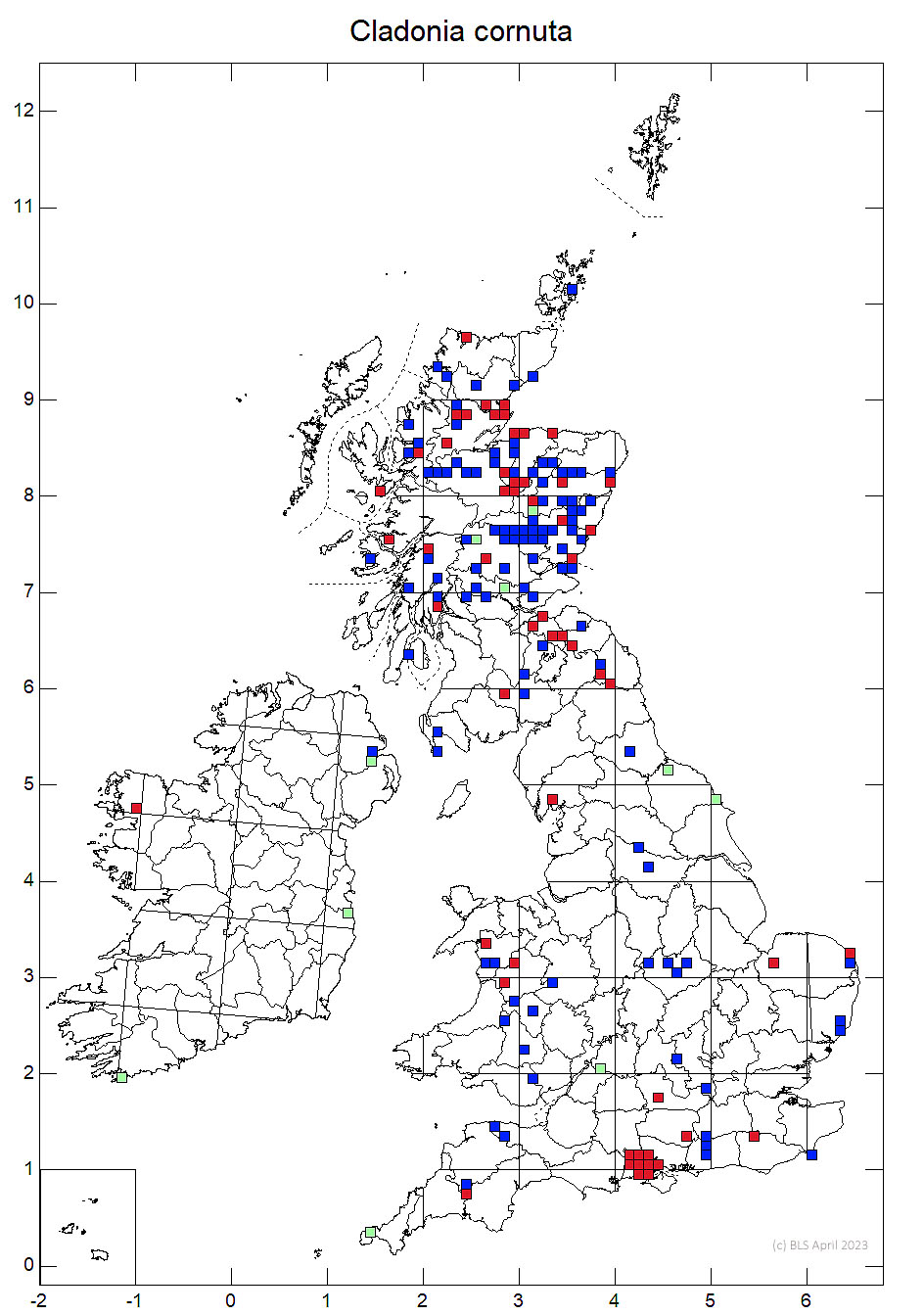Cladonia cornuta
A Heathtail, similar to C. coniocraea, but in generally more robust with the half-corticate and half-sorediate, pointed, usually brownish, unbranched podetia diagnostic. A mainly north eastern species, but occurring rarely in good quality habitats elsewhere.
Podetia 1–5 cm tall, grey to brownish green, smooth and ± faintly pale areolate-corticate in the lower half, grey-green to grey-white and densely farinose-sorediate in the upper half, the apices pointed, unbranched, rarely with narrow cups; a few squamules occasionally present towards the base. Basal squamules rather small, ± rounded, scarcely indented. Apothecia brown, very rare, at apices of podetia. Pycnidia on the tips of podetia, with colourless gel. Thallus C–, K–, KC–, Pd+ red, UV– (fumarprotocetraric acid).
Some partially corticate morphs of C. coniocraea can be confused with this species, but in general terms the half-corticate and half-sorediate, pointed, usually brownish, unbranched podetia are diagnostic for C. cornuta.
On humus, peat and rotting wood in moorlands, especially montane lichen heaths.
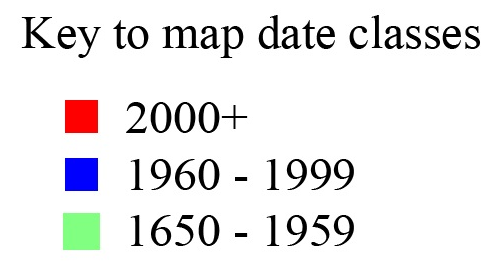
Widespread and common in Scotland but local and rare elsewhere.
Pino-Bodas, R., Sanderson, N., Cannon, P., Aptroot, A., Coppins, B., Orange, A. & Simkin, J. (2021). Lecanorales: Cladoniaceae, including the genera Cladonia, Pilophorus and Pycnothelia. Revisions of British and Irish Lichens 19: 1-45. Link
Text by Neil A Sanderson, based on Pino-Bodas et al (2021)
